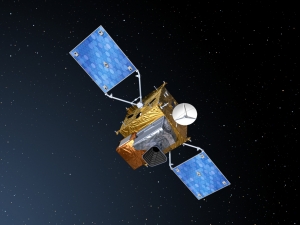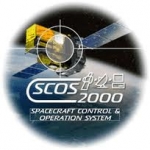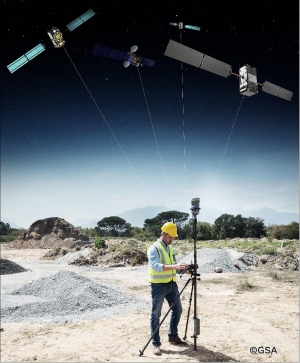Displaying items by tag: Europe
Copernicus Programme
Copernicus is the European Union's Earth observation programme coordinated and managed by the European Union (EU) in partnership with the European Space Agency (ESA), the EU Member States and EU Agencies.
It aims at achieving a global, continuous, autonomous, high quality, wide range Earth observation capacity. Providing accurate, timely and easily accessible information to, among other things, improve the management of the environment, understand and mitigate the effects of climate change, and ensure civil security.
The objective is to use vast amount of global data from satellites and from ground-based, airborne and seaborne measurement systems to produce timely and quality information, services and knowledge, and to provide autonomous and independent access to information in the domains of environment and security on a global level in order to help service providers, public authorities and other international organizations improve the quality of life for the citizens of Europe. In other words, it pulls together all the information obtained by the Copernicus environmental satellites, air and ground stations and sensors to provide a comprehensive picture of the "health" of Earth.
European GNSS Agency (GSA)
As an official European Union regulatory authority, the European GNSS Agency (GSA) manages public interests related to European GNSS(*) programmes.
The Agency's strategic objectives include the achievement of a fully operational GALILEO system. This includes the laying of foundations for a fully sustainable and economically viable system and its security.
(*) GNSS: Global Navigation Satellite Systems
European Association of Remote Sensing Companies (EARSC)
The European Association of Remote Sensing Companies (EARSC) is a non-profit-making organisation which is actively involved in coordinating and strengthening the Earth-observation (EO) chain and promoting the European geo-information industry.
EARSC is open to corporative and observer members with deeply interest in providing services delivering information based on observations of the Earth and its environment.
Since 1989, EARSC has provided its Members technical expertise and policy guidance. The Association maintains close links with key European Institutions, including Industry, ESA and National Space Agencies, providing a key unified voice on wider European issues.
Bertin technologies
Bertin Technologies develop activities in aerospace research & development, having provided valuable input in the development programmes of all of the leading European players in this field, including CNES, ESA, EADS, Thales and Safran.
Thanks to its multidisciplinary range of competencies (thermal engineering, mechanical engineering, physical modelling, ergonomics, precision electronics), Bertin Technologies' activities are all encompassing, ranging from consulting, studies and expertise (technology transfer, feasibility studies, functional analysis, workspace layout, risk management, human factor analysis, etc.) to the design and delivery of high-tech equipment (onboard electronics, optical and thermal equipment, image processing, ground support equipment, heavy load transport).
SCOS-2000 software
The Satellite Control and Operation System 2000 (SCOS-2000) is the generic satellite Mission Control System (MCS) software infrastructure developed and maintained by the European Space Agency (ESA/ESOC) in collaboration with European industry
ESA - EAC (European Space Agency)
The European Astronaut Centre(EAC) is a centre of the European Space Agency and home of the European Astronaut Corps. It is located inCologne, Germany, and is sub-divided in to four separate arms, these being Training, Medicine, Education and PR, and Astronaut Management. It provides training facilities to the European astronauts, particularly regarding ESA hardware for the ISS such as Columbus and the ATV. The overall European Astronaut Centre organisation is also in charge of the organisation of the training of European astronauts in the centers of other partners, such as the United States (Johnson Space Center), Russia (Star City), Canada (Saint-Hubert) or Japan (Tsukuba).
The Medical Operations arm (the Crew Medical Support Office) concentrates on providing health related support to the European astronauts and their families. Astronaut management supports and directs the careers and mission placements of the astronauts, and Education and PR are involved in activities related to education and outreach and the appropriate representation of the European astronauts and their space activities to the public.
ESA - ESAC (European Space Agency)
The European Space Astronomy Centre (ESAC) is the ESA's centre for space science, which means Astronomy as well as Solar System exploration. It is located in Villanueva de la Cañada, close to Madrid in Spain and hosts the science operation centres for all ESA astronomy and planetary missions together with their scientific archives.
Space telescopes are humankind’s eyes in the heavens: from their superior observing positions high above the Earth’s atmosphere, they provide us with astounding views of the Universe. ESAC is where those views are first studied – data on black holes and distant galaxies, from neighbouring planets and even from planets far beyond the Solar System are beamed back to the Madrid countryside. ESAC is thereby the ‘home’ of ESA’s space-telescope and planetary missions, the place from where their science operations are conducted, and where all of the scientific data that they produce are archived and made accessible to the world. ESAC is therefore one of ESA’s centres of excellence for space science. Missions represented a ESAC include (in alphabetical order) AKARI, Gaia, Herschel, INTEGRAL, LISA Pathfinder, Mars Express, Planck, Rosetta, Venus Express, and XMM-Newton.
In addition to deep space and solar system exploration ESAC hosts the data processing of SMOS, a satellite observing the earth, as well as the Space Situation Awareness (SSA) programm.
ESA’s deep-space antenna in Europe, located in Cebreros, Avila, is an essential support to the activities of ESAC. Inaugurated in September 2005, Cebreros features a new, highly accurate pointing control system and a 35-metre antenna that allow ESA to gather data from distant missions to Mercury, Venus, Mars and beyond.
ESAC is also involved in ESA missions conducted in collaboration with other space agencies. One example is Akari, a Japanese-led mission to carry out an infrared sky survey, launched on 21 February 2006. Future collaborative programmes also include the NASA-led James Webb Space Telescope, the successor to the Hubble Space Telescope.
In addition, ESAC also hosts the Spanish Laboratory for Space Astrophysics and Fundamental Physics (LAEFF), an innovative research facility aimed mainly at encouraging young Spanish scientists to enter the fields of astrophysics and fundamental physics.
The ESAC centre in Villafranca del Castillo, within the town limits of Villanueva de la Cañada, is located 30 km west of Madrid in the Guadarrama Valley. Evergreen oaks and the ruins of a nearby 15th century castle make a spectacular backdrop for the high-tech vista of ESA's large antennas and modern buildings. The Cebreros site is in Avila, about 90 km from Madrid and 65 km from ESAC.
ESA - ESRIN (European Space Agency)
The ESA Centre for Earth Observation (also known as ESRIN) located in Frascati, Italy, is one of the five specialised centres of the European Space Agency (ESA) located across Europe.
Located in Frascati, a small town 20 km south of Rome in Italy, ESRIN was established in 1966 and first began acquiring data from environmental satellites in the 1970s.
Earth observation: Earth Observation data has grown in importance as more and more international and national agencies recognise the many uses to which it can be put. Satellites for Earth observation keep a constant watch over the Earth and the data they provide help to safeguard the planet in which we live. Since 2004, ESRIN has been the headquarters for ESA's Earth Observation activities.
A multi-faceted centre: A number of other activities are also carried out at ESRIN, each of which is making an important contribution to ESA’s work. Among other things the establishment hosts the ESA development team for the Vega Launcher.
Galileo Navigation Program
Galileo is a joint initiative of the European Commission (EC) and the European Space Agency (ESA). Galileo will be Europe’s own global navigation satellite system, providing a highly accurate, guaranteed global positioning service under civilian control. It will be inter-operable with GPS and GLONASS, the two other GNSS (Global Navigation Satellite Systems). The complete system consists of:
• A space segment of 30 MEO satellites in 3 planes inclined at 56º
• A launch segment to place the satellites into their operational orbits
• A control ground segment for monitoring and control of the satellites
• A mission ground segment managing all mission specific data
• A user ground segment of equipment capable of receiving and using Galileo signals
Arianespace
Arianespace was founded in 1980 as the world’s first satellite launch company. Today, it has 21 shareholders from 10 European countries. Since its creation, Arianespace has launched with Ariane launchers 298 payloads, accounting for more than half of the commercial satellites now in service worldwide.
In 2010, the company had revenues of 897 M€. As of 1st July 2011, Arianespace had 332 employees, including 258 at the company’s headquarters in Evry, near Paris, 63 at the Guiana Space Center in French Guiana, launch site for Ariane 5, Soyuz and Vega, and 11 at local offices in Washington DC (United States), Tokyo (Japan) and Singapore.
Arianespace offers launch service & solutions to satellite operators from around the world, including both private companies and government agencies, based on a complete family of launchers:
- Ariane 5 heavy-lift launch vehicle, operated at the Guiana Space Center (60 launches, including 46 successful launches in a row),
- Soyuz medium launcher, which has been operated at Baikonur since 1999 (23 commercial launches, all successful), and which, after the success of the first launch on 21 October 2011, is now being operated at the Guiana Space Center,
- Vega light launcher, which will be operated at the Guiana Space Center starting 2012.
The technical performance of its launch vehicles and a substantial order book have made Arianespace the world leader in satellite launch services for the last few years (as of 2012), with a market share exceeding 50%.










